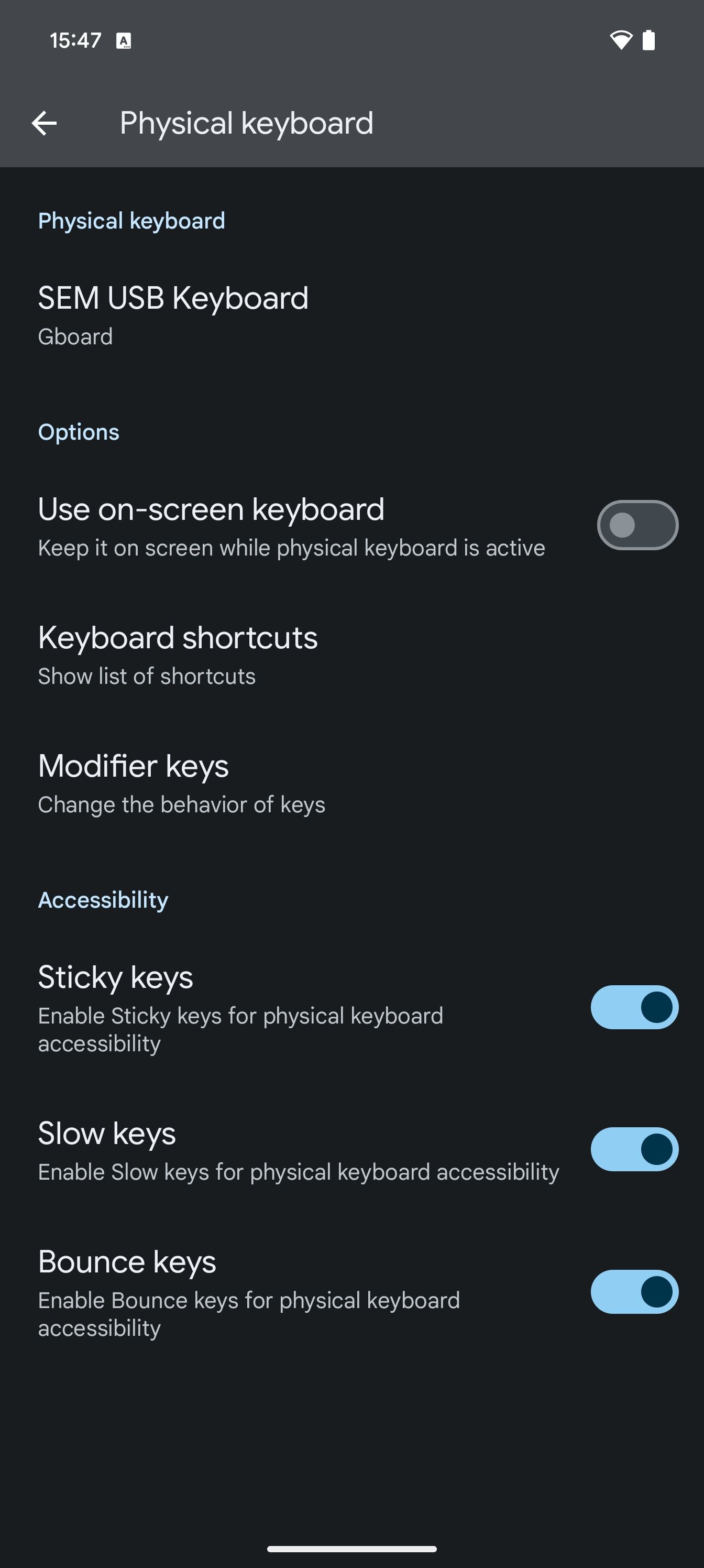Summary
Android 15 DP2 enhances physical keyboard support with the inclusion of bounce, sticky, and slow key options.
Bounce and sticky keys had previously appeared in Android 14 QPR3 Beta 2, with the soft keys option now popping up in the latest software.
Android 15 DP2 also brings keyboard previews for easier adjustment to layout changes.
With Android 14 QPR3 Beta 2, Google added a couple of useful accessibility features for physical keyboards, such as bounce and sticky keys. Android’s support for physical keyboards has improved gradually, with Google looking to enhance the platform’s desktop credentials regardless of the device’s size (smartphone, tablet, foldable, etc). Achieving this requires decent physical keyboard support, and Google continues to work toward this goal by adding a new slow keys option in the second Android 15 developer preview.
Related
Android 15: News, leaks, timeline, and everything new in DP2
Here’s what we know about Android 15 now that the first developer preview has landed
Writing for Android Authority, Android expert Mishaal Rahman gives us a glimpse of this newly added Slow keys option within the Accessibility section under Settings > System > Keyboard > Physical keyboard. It’s worth noting that Rahman found the Slow keys option in his extensive Android 14 QPR3 Beta 2 deep dive earlier this month, accurately predicting at the time that the toggle could go live in a forthcoming Android release.
These keyboard inclusions are part of Google’s plans to bolster Android’s credentials as a viable competitor to established desktop operating systems like Windows, which has offered these options for a while now.

The Slow keys option joins the Sticky and Bounce keys
For the uninitiated, the bounce keys toggle tells the system to ignore continuous keystrokes of the same alphabet/character. Sticky keys are useful for letting the system have a couple of buttons pressed down for a while, which is helpful when using modifier keys like Shift, Ctrl, or Alt in combination with other keys.
Meanwhile, the newly popped-up Slow keys option lets the user customize how long the key needs to be pressed for Android to recognize it. Rahman says that with the Slow keys toggle enabled, pressing the Windows button on a connected physical keyboard for 1.5 seconds returns the user to the Android home screen.
Android 15 DP2 doesn’t yet have the option to let users customize the duration of the key press with Slow keys enabled. But digging through the recent dev preview’s code, Rahman found that Google could allow up to five seconds for this particular accessibility feature.
Keyboard layout previews are included in Android 15 DP2
Rahman also found new onscreen previews for physical keyboards (pictured above) within Android 15 DP2. These previews give users a quick glimpse of the chosen layout, enabling them to adjust to the change more quickly. This could be helpful if you’re required to work with multiple keyboard layouts as part of your job or studies. It’s currently unclear if Google will release these new physical keyboard-related changes with Android 15 later this year or with the June Pixel Feature Drop, a.k.a. Android 14 QPR3.
